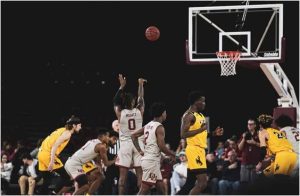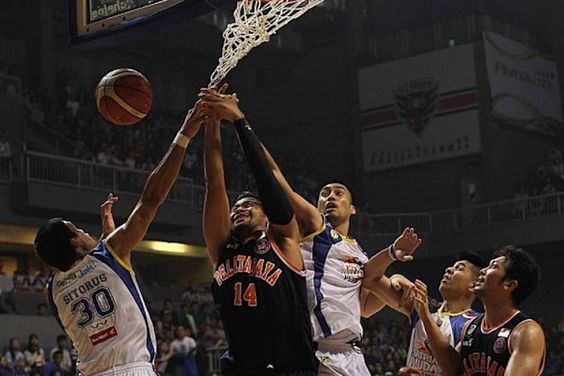What is a rebound in basketball?
In basketball, a rebound refers to the act of gaining possession of the basketball after a missed field goal or free throw attempt. When a player shoots the ball at the basket and it bounces off the rim or backboard without going in, players from both teams compete to grab the rebound. Rebounding is a crucial aspect of the game as it gives a team a second chance to score if they secure an offensive rebound, or it prevents the opposing team from getting an easy scoring opportunity if they get a defensive rebound.
The Basics of Rebounding
Rebounding refers to the act of grabbing the basketball after a field goal or free throw attempt misses the mark. It’s a battle between players from opposing teams, each striving to gain control of the ball. This phase of the game is marked by intense physicality and positioning, where every inch matters.
There are two types of rebounds:
- Offensive Rebound: This occurs when a player from the shooting team grabs the ball after their teammate’s missed shot. Offensive rebounds extend a team’s possession and provide them with another attempt to score.
- Defensive Rebound: This happens when a player from the defending team retrieves the ball after the opponent’s missed shot. Defensive rebounds are important for stopping the other team from getting easy points and initiating their own offensive play.\
Rebounding involves a combination of positioning, timing, and physicality. Players often box out their opponents, using their bodies to create space and secure a better position to grab the rebound. Strong rebounding can significantly impact a team’s performance by controlling the tempo of the game, limiting the opposing team’s second-chance opportunities, and allowing for fast breaks and additional scoring chances.
Types of Rebounds
Offensive Rebounds
Offensive rebounds occur when a player from the offensive team grabs the ball after their own team’s missed shot. This provides the team with a fresh shot clock, extending their possession and allowing for more scoring opportunities.
Defensive Rebounds
Conversely, defensive rebounds involve a player from the defensive team securing the ball after the opposing team’s missed shot. Defensive rebounds are essential for stopping the offensive team from capitalizing on additional scoring chances. Also, read about What is a Box Out in Basketball? A Fundamental Technique
The Art of Rebounding
Box Out Technique
One of the fundamental skills in rebounding is the box-out technique. Players position themselves strategically to create a barrier between their opponent and the basket. This technique enhances the player’s chance of grabbing the rebound.
Positioning and Timing
Rebounding is as much about positioning and timing as it is about athleticism. Anticipating where the ball will bounce off the rim and being in the right place at the right time can make all the difference.
Rebounding Strategies
Transition Play after a Rebound
Transitioning smoothly from defence to offence is a critical aspect of the game. When a player grabs a defensive rebound, it’s often the perfect opportunity to initiate a fast break. The player can quickly advance the ball up the court, catching the opposing team off-guard and capitalizing on the element of surprise.
Second Chance Points
Offensive rebounds offer a second chance to score, hence the term “second chance points.” When a player successfully grabs an offensive rebound, it not only extends their team’s possession but also puts them in a prime position to score immediately. Second-chance points can swing the momentum and deflate the opposing team’s morale.

Rebound Leaders in Basketball History
Throughout the history of basketball, there have been iconic rebounders who’ve left an indelible mark on the game. Legends like Wilt Chamberlain, Dennis Rodman, and Bill Russell were renowned for their ability to dominate the boards. Their tenacity, timing, and skill in securing rebounds have set records that continue to inspire players today.
The Psychological Edge of Rebounds
Rebounds go beyond the physical aspect of the game; they also have a profound psychological impact. When a team consistently grabs offensive rebounds, it sends a message of determination and resilience. Conversely, denying the opposing team offensive rebounds can frustrate their efforts and disrupt their rhythm, tipping the psychological balance in favour of the defensive team.
Coaching and Training for Effective Rebounding
Drills and Exercises
Coaches employ various drills to hone players’ rebounding skills. From box-out drills to simulated game situations, these exercises improve players’ ability to read the trajectory of the ball, anticipate bounces, and maintain proper positioning.
Mental Preparedness
Rebounding isn’t solely about physical prowess; mental preparedness plays a significant role. Players need to stay focused, read the game, and react swiftly. Visualization techniques and mental exercises can help players stay sharp and ready to seize rebounding opportunities.
The Role of Rebounds in Stat Sheets
In the world of basketball statistics, rebounds hold a prominent position. Rebounds are divided into offensive and defensive categories, showcasing a player’s versatility. A high rebound count can elevate a player’s impact on the court and contribute to their team’s success.
The Evolution of Rebounding in the Game
Over the years, the emphasis on rebounding has evolved. In the past, bigger players were primarily tasked with grabbing rebounds. However, the modern game has seen guards and smaller forwards becoming adept at rebounding, contributing to a more well-rounded approach to the game.
Rebounds and Momentum Swings
A single rebound can trigger a momentum swing. Imagine a tight game where the score is neck and neck. A team secures a crucial offensive rebound, leading to a game-changing three-point shot. This sequence of events not only adds points to the scoreboard but also infuses the team with energy and determination.
Rebounds in Crunch Time
During critical moments in a game, rebounds become even more essential. In clutch situations, grabbing key rebounds can extend possessions, prevent opponents from scoring, and give the team a chance to secure victory. Players who excel in clutch rebounds often become unsung heroes.
Famous Rebounding Moments
Throughout basketball history, there have been unforgettable rebounding moments. From last-second put-backs to game-saving rebounds, these instances remind us of the unpredictable and thrilling nature of the sport.

The Future of Rebounds in Basketball
As the game continues to evolve, so does the art of rebounding. With advancements in sports science, training techniques, and strategy, rebounding will remain a cornerstone of basketball. Players will continue to find innovative ways to maximize their rebounding potential and contribute to their team’s success.
Conclusion
In the world of basketball, rebounds are more than just statistics; they embody the spirit of resilience, opportunity, and teamwork. The ability to secure a rebound can turn the tide of a game and elevate players from good to great. As fans, we’ll continue to marvel at the dynamic interplay of players striving to grasp that bouncing ball and shape the destiny of their team.
FAQs
What is an offensive rebound?
An offensive rebound occurs when a player from the offensive team retrieves the ball after their team’s missed shot, giving them a second chance to score.
Who holds the record for the most rebounds in NBA history?
Dennis Rodman holds the record for the most rebounds in NBA history, showcasing his remarkable skill on the boards.
How can I improve my rebounding skills?
Improving rebounding skills involves a mix of physical techniques and mental focus. Practice box-out drills, work on timing, and stay mentally prepared to read the game.
Can guards be effective rebounders?
Absolutely, guards can be effective rebounders. Many modern players, regardless of position, work on their rebounding skills to contribute more comprehensively to their teams.
What’s the significance of fast break opportunities after a rebound?
Fast break opportunities after a rebound catch the opposing team off-guard, allowing for a quick transition from defence to offence and often resulting in easy scoring chances.
Alina is a passionate basketball player with a love for the game that knows no bounds. With years of experience on the court, she brings unmatched skill and dedication to her team. Alina’s commitment to excellence both on and off the court sets her apart as a leader and motivator. Whether she’s driving to the basket or encouraging her teammates, Alina’s enthusiasm and sportsmanship shine through. As a valuable member of the basketball team, Alina’s presence elevates the spirit and performance of the entire squad.







